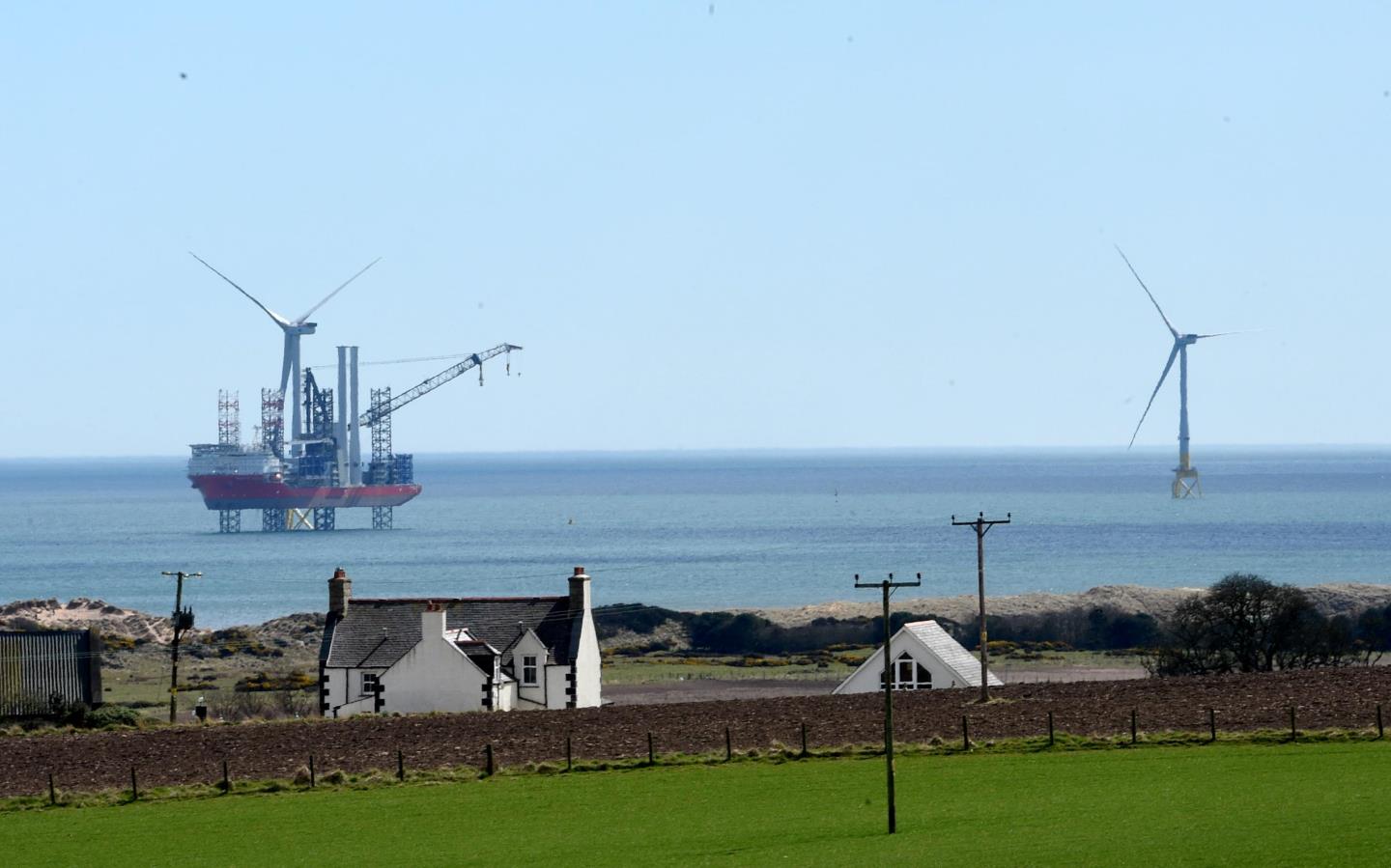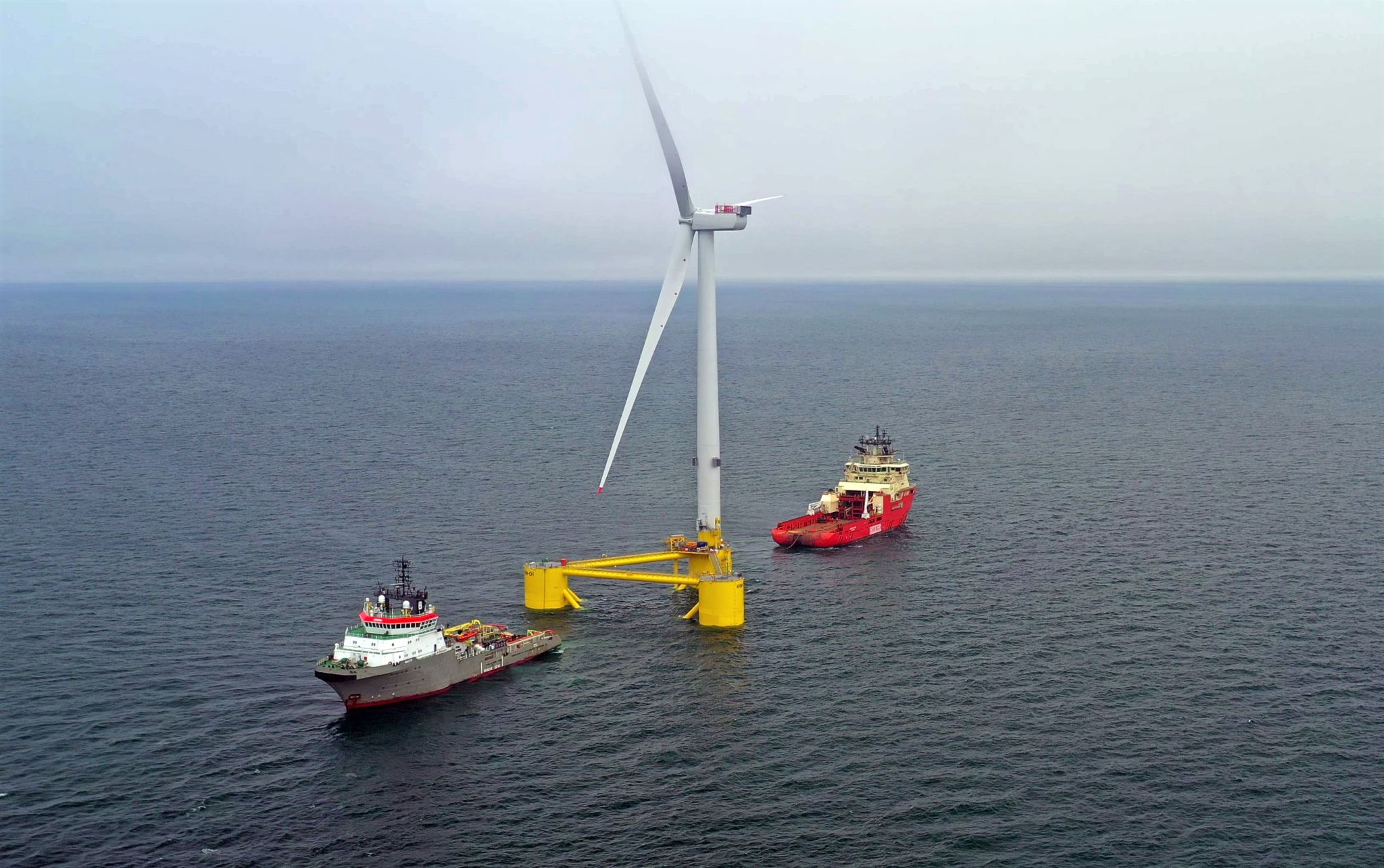With discussions spanning consenting, finance and policy across the offshore wind space, here are our key takeaways from this week’s major conference in Glasgow.
It was a whirlwind two days in Glasgow this week for Scottish Renewables annual Offshore Wind Conference.
With each day aligned with one of the two pillars of supply chain and policy, sector leaders continued to paint a bright picture and healthy pipeline in the wake of the ScotWind and INTOG leasing rounds.
Yet challenges also persist around consenting, the availability of port infrastructure and the demand for timely grid connections.
Here are some of our top takeaways.
All eyes on AR6 budget
The industry appears to be recovering after the disaster of the last Contract for Difference round and has warmly welcomed a reset of strike prices for AR6. But much discussion at the event turned to the volume of projects and the budget available for the dedicated offshore wind pot.
SSE Renewables’ director of bids for UK and Ireland Mark Timmons made clear a bullish request for “over 10GW” of offshore wind in the pot due to the backlog from 2023’s unsuccessful AR5, and to make room for the wave of projects likely to be consented in the coming year.
Sarah Redwood of the Department for Energy Security and Net-Zero acknowledged that managing the AR6 auction was her “top priority” ahead of an announcement in March, and that she hoped to get the pot “as high as possible while ensuring it’s a competition”.
Notably, she also noted that the budget set in March is based on the projects eligible to bid now – but this could be increased if more projects are consented.
Government to set budget for ‘catch-up’ AR6 CfD auction in March
In December DESNZ’s Helena Charlton said the department aimed to leave its final budget decision as late as it could to allow as many projects to secure consents and connections in time to apply.
Port challenge still crucial
Meanwhile, there was continued demand for support and certainty around the UK’s port infrastructure needs.
First Minister Humza Yousaf set the scene on day one, hinting at an upcoming investment as part of the Scottish Government’s Strategic Investment Model (SIM).
Meanwhile, Ms Redwood spoke of an imminent update on the UK government’s Floating Offshore Wind Manufacturing Investment Scheme (FLOWMIS), which again would help mobilise capital into the sector.
The perils of failing to mobilise this investment was also referenced during a panel on Thursday. News that Equinor’s Hywind turbines would be towed back to Norway for maintenance rather than to the UK was decried as a “lost opportunity” for the local supply chain – and one which industry leaders say cannot continue.
Community benefit
Representatives from the Scottish Government stressed to developers the importance of demonstrating tangible community benefits from any proposed offshore wind projects.
Scottish Government deputy director for offshore wind consenting and marine planning support Mike Palmer told conference delegates demonstrating social licence for a project is “crucial” for successful consent applications.
“It is always a great concern to Scottish Ministers to be able to see a demonstration of benefits to communities that are coming from these offshore wind developments, and you would expect that from a politician,” Mr Palmer said.
“They will be looking for that in any application that comes through for derogation. It’s clearly going to be a big factor, the degree of social licence that you’ve got.
 © Supplied by DCT Media
© Supplied by DCT Media“I can’t emphasise enough the importance of engaging the communities… It’s so crucial in your application to be able to demonstrate that you’ve got the various interests that are being affected onside.”
Many rural communities in Scotland, particularly those in the Highlands, remain unconvinced they’re getting a fair deal from renewable energy developments [link], with some questioning the “tokenistic” approaches of developers.
Ocean Winds’ UK country manager Adam Morrison suggested the sector might be coming to the point of “exhausting” the traditional community benefit and payments model. Instead, when all is said and done, the industry is likely to be judged on its lasting legacy of creating jobs, skills and energy security, he ventured.
Rural communities in particular need to see the benefits of the new network of generation and infrastructure that is planned.
While community benefit funds are well established for onshore wind farms, some delegates pointed out the difficulty in defining a distinct community for offshore wind developers.
SSEN Transmission director of customers and stakeholders Christianna Logan floated the idea of wind developers contributing to both local and regional funds in the areas they operate, with projects pooling community fund resources together to “accelerate the benefits”.
‘No transition without transmission’
The importance of transmission infrastructure was widely discussed in the wake of the Winser Review, with the sector desperate to overcome barriers to grid connection.
National Grid estimates the UK needs to build five times more transmission lines by 2030 than have been built in the past 30 years, at a cost of more than £50 billion.
But standing between these offshore wind projects and their grid connections are hundreds of landowners and communities, many of whom are determined to stop further electricity pylons being built.
 © File photo. Sandy McCook
© File photo. Sandy McCookBlueFloat Energy Renantis Partnership portfolio director David Robertson said while it was important to speed up grid connections to meet net zero targets, the overall direction of the electricity grid was just as important.
Mr Robertson said the UK needed a “fit for purpose” and “future proof” grid network, and argued Electricity Act reforms would speed up planning and provide greater standardisation of projects.
National Grid head of customer connections David Wildash said there needed to be a “holistic approach” to network design, bringing together projects and minimising infrastructure spending.
Thistle Wind Partners energy export capacity manager Jean Lewis said offshore wind needed a coordinated industry campaign to better educate the public on the importance of electricity infrastructure to a net zero future.
Collaboration key to success
With the sector having weathered a storm of challenges in 2023, many speakers highlighted the need for greater collaboration between developers moving forward.
Ms Lewis said many offshore wind developers are currently duplicating their surveying, planning and environmental assessments which is costing the industry both time and money.
She pointed to a situation where several Scotwind developers had separate marine survey vessels in the water at the same time, surveying nearly identical sections of the seabed.
 © Boskalis
© BoskalisCoordinated data sharing, she suggested, would cut costs and expense for all developers and suggested using Scotwind and INTOG projects as trial schemes to promote greater industry collaboration.
Speakers also highlighted the benefits of greater collaboration and strategic planning are not limited to offshore wind developers.
Global Energy Group executive director Ian Sinclair said the success of the Inverness and Cromarty Firth Green Freeport bid showed the benefits of bringing together competitive businesses.
He added that with so much economic potential within the Scottish offshore wind sector, businesses needed to recognise that in an emerging sector collaboration would lead to more opportunities, not less, and to focus on what they can do to help each other.
Recommended for you

Equinor among big name bidders for fourth New York offshore wind round
- SEO Powered Content & PR Distribution. Get Amplified Today.
- PlatoData.Network Vertical Generative Ai. Empower Yourself. Access Here.
- PlatoAiStream. Web3 Intelligence. Knowledge Amplified. Access Here.
- PlatoESG. Carbon, CleanTech, Energy, Environment, Solar, Waste Management. Access Here.
- PlatoHealth. Biotech and Clinical Trials Intelligence. Access Here.
- Source: https://www.energyvoice.com/renewables-energy-transition/wind/uk-wind/546450/five-things-we-learned-from-offshore-wind-conference-2024/
